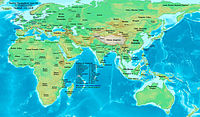As a means of recording the passage of time, the 11th century is the period from 1001 to 1100 in accordance with the Julian calendar in the Common Era. In the history of European culture, this period is considered the early part of the High Middle Ages. There was a sudden decline of Byzantine power and rise of Norman domination over much of Europe, along with the prominent role in Europe of notably influential popes. In Northern Italy, a growth of population in urban centers gave rise to early organized capitalism and more sophisticated, commercialized culture by the late 11th century. In Song Dynasty China and the classical Islamic world, this century marked the high point for both classical Chinese civilization, science and technology, and classical Islamic science, philosophy, technology and literature. Rival political factions at the Song Dynasty court created strife amongst the leading statesmen and ministers of the empire. Chola-era India and Fatimid-era Egypt, had reached their zenith in military might and international influence. The Western Chalukya Empire (the Chola's rival) also rose to power by the end of the century. In this century the Turkish Seljuk dynasty comes to power in the Middle East over the now fragmented Abbasid realm, while the first of the Crusades were waged towards the close of the century. In Japan, the Fujiwara clan continued to dominate the affairs of state. In the Americas, the Toltec and Mixtec civilizations flourished in central America, along with the Huari Culture of South America and the Mississippian culture of North America. In Ukraine, there was the golden age for the principality of Kievan Rus. In Korea, the Goryeo Kingdom flourished and faced external threats from the Liao Dynasty. In Vietnam, the Lý Dynasty began, while in Myanmar the Pagan Kingdom reached its height of political and military power.




Comment
0